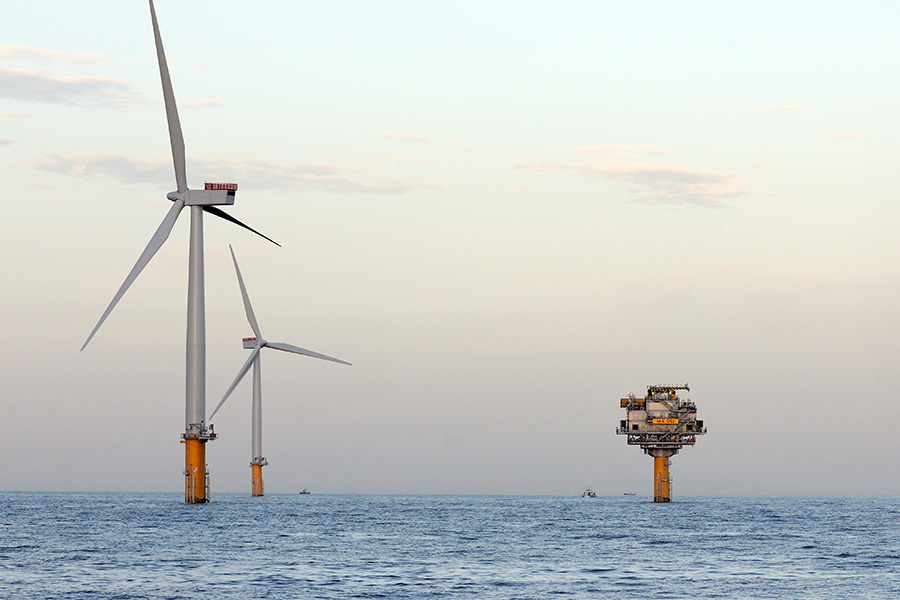A halt now to licencing new North Sea gas would lose UK electricity production in 2030 easily replaced with the output of an average-sized wind farm, analysis out today from the Energy & Climate Intelligence Unit calculates.
Adopting immediately Labour’s declared freeze on new marine extractions loses only 30 TWh per year, says the ECIU. That’s well within the production capacity of offshore facilities coming on stream, such as each of the Dogger Bank project’s three phases.
The ECIU’s analysis is based on statistics from the industry regulator the North Sea Transition Authority (NTSA).
Researchers found installing heat pumps in all new UK homes planned for the rest of this decade would avoid half as much gas again.
Offshore wind farms generate electricity much more cheaply than gas power stations. A 2.7GW wind farm would, on the ECIU’s costings, generate as much power as from burning the avoided North Sea gas, and could pay back £12 billion over the period of a 15-year Contract for Difference (CfD), based on forecasted wholesale prices.
Around 100GW of offshore turbine projects await construction or completion in UK-licenced waters. Phase 3 of SSE Renewables’ Dogger Bank project will begin output in 2026. Each phase promises 1.2GW. The operator is weighing up a fourth extension.
New polling has also found that 54% of Britons prefer tax cuts to be focused on renewables, compared to only 15% who think they should be given to oil and gas companies. Pollsters Opinium quizzed 2,150 adults last week.
“There is an opportunity cost in providing tax cuts to oil and gas companies in that you’re not providing those tax cuts elsewhere in the economy”, ECIU energy analyst Jess Ralston observed.
“Even with a windfall tax in place, oil & gas companies are generating record-breaking profits. Meanwhile, renewable investors are warning that they plan to put their money in the US and EU thanks to tax credits on offer there, so the UK is at risk of missing out on private sector cash.
“With more wind farms in place, gas plants will switch on less often meaning the UK needs to find and pay for less gas and is more energy secure. Plans to accelerate offshore wind farms could balance out a moratorium.
“According to the industry itself, North Sea output will continue to decline in the coming years”, Ralston continued. “Jobs will disappear whatever happens”
“So the question for industry and government is how best to transfer those valuable skills into a growing sector like wind away, and away from one that’s in decline.”
By 2030, according to forecasts from the NTSA regulator, UK gas production will be c.190TWh/yr, 55% below current levels.
Of this output in 2030, 85% would be from existing fields, and only 15% would be affected by any moratorium on new licencing, either from drilling in new fields or more speculative ‘future discoveries’.
Burning 30TWh of gas in power stations would generate around 15TWh of electricity, owing to inherent inefficiencies in gas power plants. The same amount of power can be produced each year by 2.7GW capacity of new offshore wind turbines, which are the cheapest form of power generation.
New renewables will be paying back billions to household bills in the coming years via Contracts for Difference, Ralston points out. CfDs undercut regular electricity prices, which are largely driven by the cost of gas.
But the renewables industry has expressed concern that the Government’s recent tax changes and decision not to reciprocate tax breaks like the Investment Allowance provided to North Sea drillers will slow deployment, as will planning regulations.
In the face of inexorable declines in North Sea gas production, some green observers fear the government might increase the nation’s dependence on gas imports such as LNG, by allowing housebuilders to install gas boilers in new home.
That’d be a retreat from sense, say the ECIU. By 2030, a new-build home with an electric heat pump would use only one-tenth of as much gas as one with a gas boilers, thanks to renewables replacing most of the gas used in power generation.
If heat pumps were installed in all 2.1 million homes that could be built by 2030, they would save half the amount of gas affected by a moratorium on new North Sea licences.
Currently, heat pumps are made in the UK in Cornwall, Derbyshire, Northern Ireland and Scotland. Their manufacturers are among businesses adding more than £70 billion to Britain’s Gross Value Added, according to ECIU-commissioned analysis.
That could shrink, the think tank cautions, if the government fails to match investment incentives for the UK, such as the US Inflation Reduction Act and the European Union’s response, its the Net Zero Industry Act.




